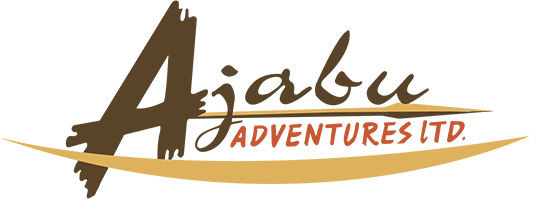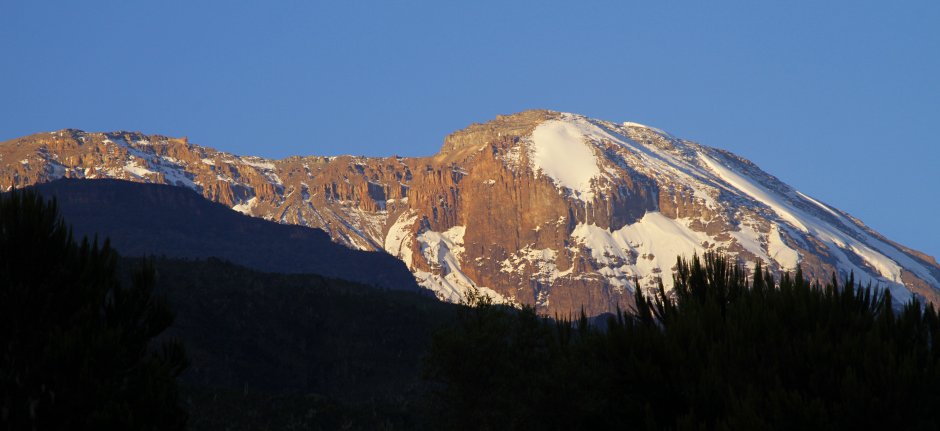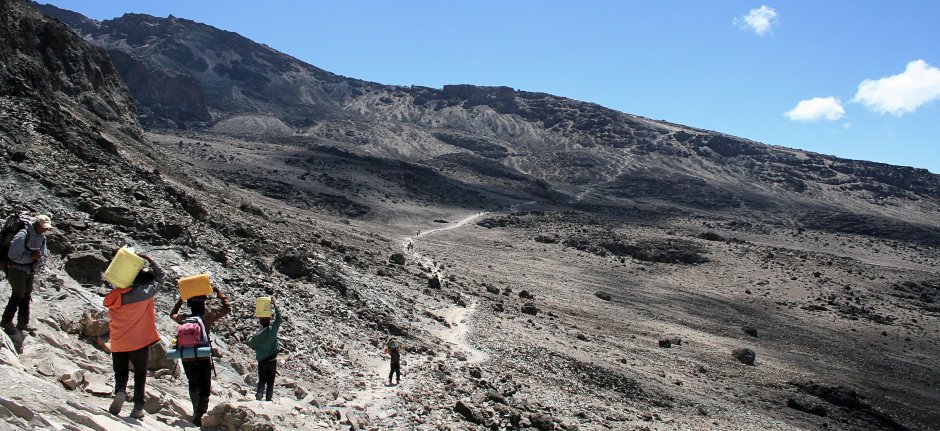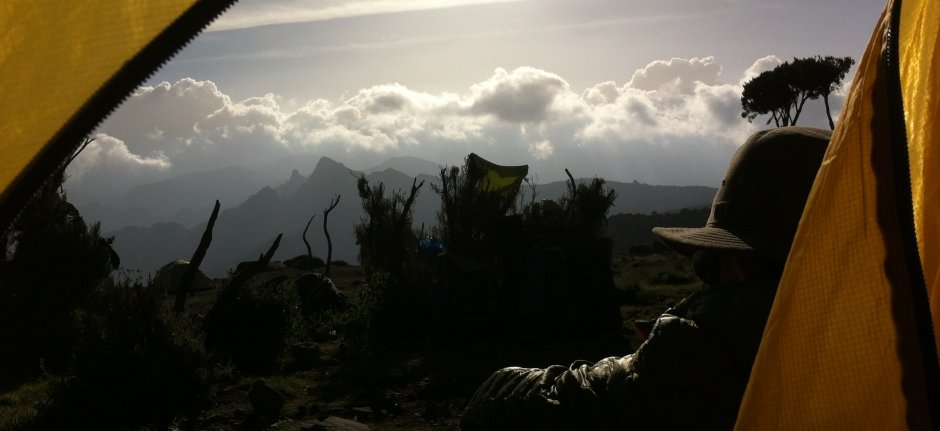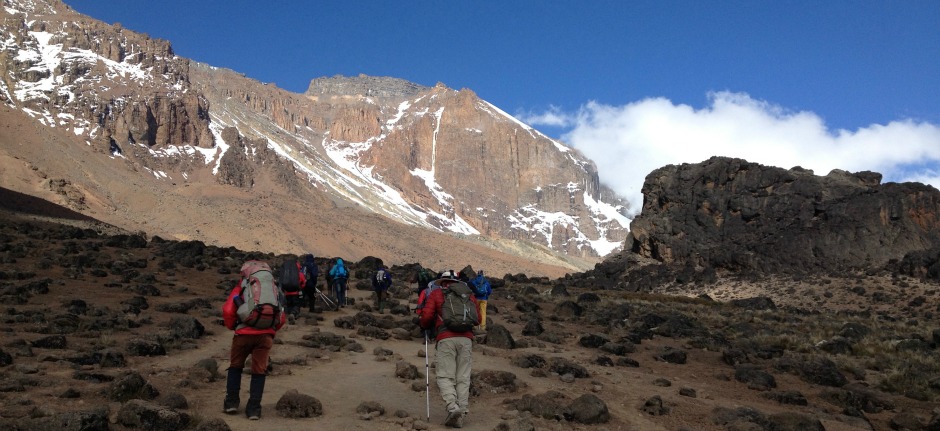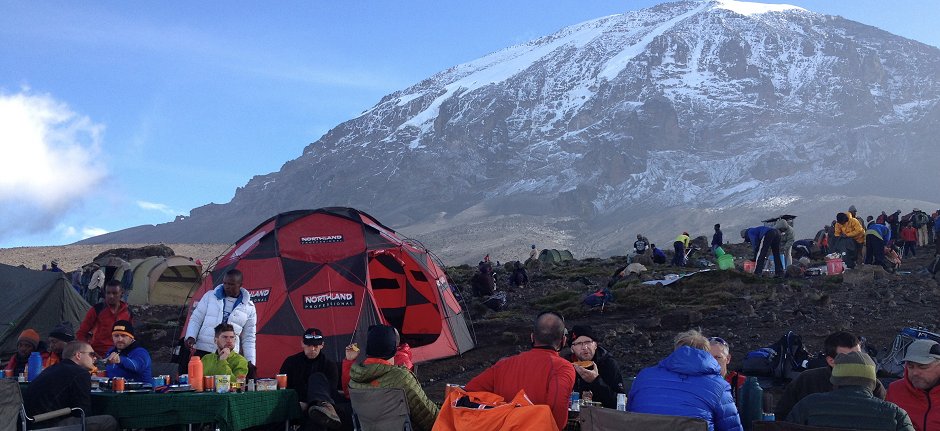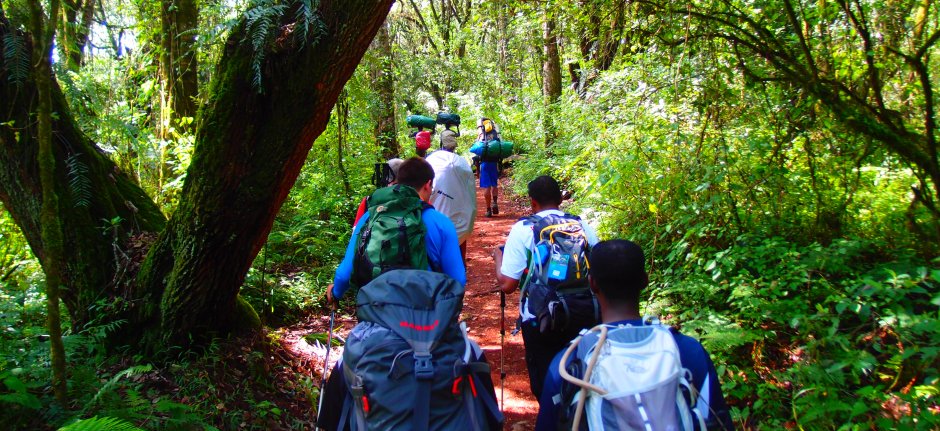7 Tips for a successful Kilimanjaro climb
Climbing Mount Kilimanjaro (5,895 meters) is a once in a lifetime experience. Also known as one of the world’s most accessible high summits, it attracts thousands of visitors to stand on the “Roof of Africa”.
And you know what? You don’t have to be super fit, experienced or skilled to reach its snowed peak. Most climbers reach the top with little more than a walking stick, protective clothing and good preparation. And lots of determination! Even you can do it with these 7 tips before starting your expedition.
1. Best season to climb Kilimanjaro
Technically, Mount Kilimanjaro can be climbed year-round. However, if your travel dates are flexible you might as well choose the most favorable season: the driest and warmest months of the year, with the highest chance of clear weather. Generally, the best months to climb Kilimanjaro are January-February and September-October. However, as these are the most popular months of the year, book your trip as early as possible to ensure availability.
2. Choose your route wisely
Increasing your chances of reaching the Uhuru peak, means to increase the number of days on the mountain. Almost 50% of the climbers do not reach the summit because of serious altitude related issues.
Climbing Kilimanjaro is not just a matter of walking uphill and down again. There are 6 different routes to choose from, which all vary in length, scenery and costs. Decide for yourself which route is best for you!
The Marangu route is also known as the “Coca Cola” route and takes 5 or 6 days. You will go up and down via the same route. If you do not want to overnight in tents, then the Marangu route is the best choice since this is the only route with mountain huts. It is also the most touristic route.
The Machame route is known as the “Whiskey” route and can be completed in 6 or 7 days. The way down is different from going up and the viewpoints are more spectacular, thanks to the Shira Plateau, Lava Tower and Barranco Wall. On this route you will sleep in tents, with a separate dining and toilet tent.
Together with the Marangu route, this is the most popular climb route on Kilimanjaro, but it can also be crowded.
The Rongai route (6 or 7 days) is similar to Marangu, though with overnight in tents. The route up is from the north and you will descend via the Marangu route. This route offers you to experience both sides of the mountain, with higher chances to seeing wildlife than other routes.
The Shira route starts from the west and then joins the Machame route. It can be climbed in 6 or 7 days and has relatively less traffic. Keep in mind though that you will cover the first part by 4WD vehicle and start walking at a height of over 3500 meters. This difference in altitude might be experienced as an extra challenge.
The Lemosho route (7 or 8 days) is our favorite one as it is the most scenic route of all, with a different way down than from the way up. Especially the first two days take you through beautiful and remote rainforest, also known as the “Lemosho Glades”. It is definitely a trail away from the crowd and thanks to the extra day(s), the success rate is rather high.
And finally there is the Umbwe route, an absolutely stunning route but not much used. It is the most difficult route with a steep and tough trail. But if you have some experience in climbing mountains, it is more than worthwhile!
The minimum is 5 days but we recommend expanding the program to at least 7 days to acclimatize to the altitude. It will improve your chances to successfully climb the mountain and give you some extra rest before the summit day.
3. Prepare physically and mentally
Climbing Mount Kilimanjaro is not only done with your body but also with your mind. Sure, you need some minimum level of fitness. So go for a long walk or run, preferably in a hilly area with a backpack of 5-6 kg. Take the stairs instead of the elevator. And leave the car but go on your bike.
However, you can train as much as you want, but in the end you will need even more courage and determination to reach the top! There will likely be a moment that you want to give up. This is when you need to show your mental strength. Especially the summit night will be one of the hardest things you will ever do. But therefore it so worthy and memorable!
Prepare yourself with some mental tricks to keep you motivated even during the most challenging parts. Just go on, taking one step at a time. And remember to enjoy the beauty along the way!
4. Go slow
Although you may start your climb full of energy, remember to dose. It’s not a race who finishes at the top first. In case you may forget, you will repeatedly be reminded by your guides and porters saying “pole pole”, which means “slowly slowly” in Swahili.
The best way to avoid altitude sickness is to take time to acclimatize. Not only by adding an extra day on the mountain but also by taking it easy. Because the air is thinner and there is less oxygen, your body will have to work harder. Be a tortoise, go as slow as you can. That is the most successful way to make it up that mountain.
5. Remember to eat and drink
At thousands of meters above sea level, it is inevitable to drink a lot of water to avoid dehydration. After all, dehydration is a key cause of altitude sickness. Bring some reusable water bottles or a camel pack and drink at least 3 liters of water per day. You can add energy supplements to your water or hydration salts to avoid any risk of getting dehydrated, especially when you’re suffering from an upset stomach.
Apart from drinking, don’t forget to eat either. Your body will need the energy. Even if are not hungry, you must try and eat something to maintain your reserves. We also advise to bring energy bars so you can always eat when you are feeling weak or hungry.
6. Bring the right gear
Make sure that you fill your travel bag with the right gear. When confirming your trip with us, you will receive a detailed packing list of what to bring.
Good (waterproof) hiking boots and warm clothes are essential. Wear multiple layers to keep you warm but avoid synthetic or cotton as these fabrics don’t dry well. Another tip is to put your clothes at the bottom of your sleeping bag at night so they will be slightly warmed up before putting them on in the morning. Being well prepared is the key to success on the Kilimanjaro!
7. Guides and porters are your best friends
When climbing the Kilimanjaro it is down to you if you are going to make the top or not. But the people around you, especially your guide and porters, are a valuable asset and indispensable.
Our guests are led by one head guide, an assistant guide, a cook and 2 to 3 porters per person, depending on the weight of your luggage. If you feel that you are having a hard time walking up that mountain, think about the porters carrying each approximately 15 kg on their back!
The expedition team is devoted to make your climb successful and will support you wherever they can. They will lead you along the best path, entertain you with songs and teach you some Swahili words. They will prepare meals full of nutrients that you need, to have a greater chance of summiting. Everything carried up will be carried down; no waste and trash will be left behind.
Because your health is paramount, the crew is provided with emergency equipment. Twice a day (or more often if necessary) they will do a medical check on you. They are also trained to recognize altitude sickness and in some cases they may decide that you have to stop the climb and descend.
For this reason it is so important and common to tip all the guides and porters appropriately at the end of the climb. To receive a tip directly from you is a token of appreciation and will be received with much enthusiasm and gratitude.
